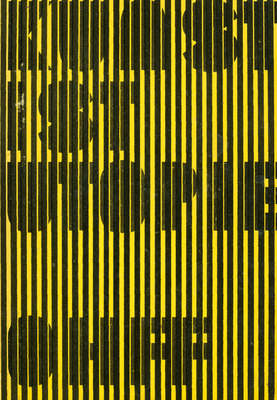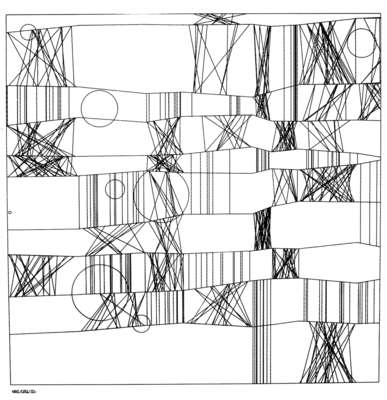



| title: | Kunst ist Utopie |
| year: | 1972 |
The title of this German book has the form of a statement of fact: »Art is Uropia«. As if anything that could possibly belong to the domain of artistic production, would per se belong to the horizon of some utopia. Literally this would suggest that art is nowhere. – The book appears as one of those books by journalists who are writing about art presenting a wild selection of views from a contemporary art scene.
In the special context of algorithmic or digital art, the 224 pages volume is remarkable because, in its third chapter, it directly refers to early computer art. Ohff takes up a question by Herbert W. Franke about further developments in art and, in this context, presents Frieder Nake’s Hommage à Paul Klee (1965). An indirect second reference to digital art is chapter 8 (The electronic phenomenon) that mentions cooperation between K.O. Götz and Nake in 1968.
In the typical style of a kind journalist of limited insight into technology, Ohff in chapter 3 writes, in a fictitious letter to two surrealist painters: ”… scientific-technological thinking has deeply engraved itself into the arts. Computers generate graphic design. You input, e.g., ’Paul Klee’, and as a result you get (the drawing mentioned above).” (p. 51) Even forty years later, nothing of this claim has come true.
The book’s list of contents announces these topics:
• Was ist utopische Kunst? (What is utopian art?)
• Bewegung – Utopie & Verwirklichung (Motion – utopia and reality)
• Gibt es surrealistische Utopien? (Are there surrealist utopias?)
• Malen mit Licht, das Unmögliche (Impossible: painting with light)
• Kunstwerk Babylon, die höhere Baulust (Bable as a work of art, great joys of architecture)
• Angst und Skepsis vor der Zukunft (Angst and future skepsis)
• Das komplexe Sehen, eine Abschweifung (Complex viewing: a digression)
• Das elektronische Phänomen (The phenomenon of electronics)
• Das veränderliche Kunstwerk oder Der Bildungstrieb der Stoffe (The varying work of art, or Formative desire of materials)
• Life instead of Art
• Die Anti-Utopie (Anti utopia)
• Parthenon aus Blut und Tränen (The Parthenon of blood and tears)
• Die besorglichen Künstler (Considerate artists)
The book’s visual design is by Hans-Peter Willberg, a then leading German book designer.


